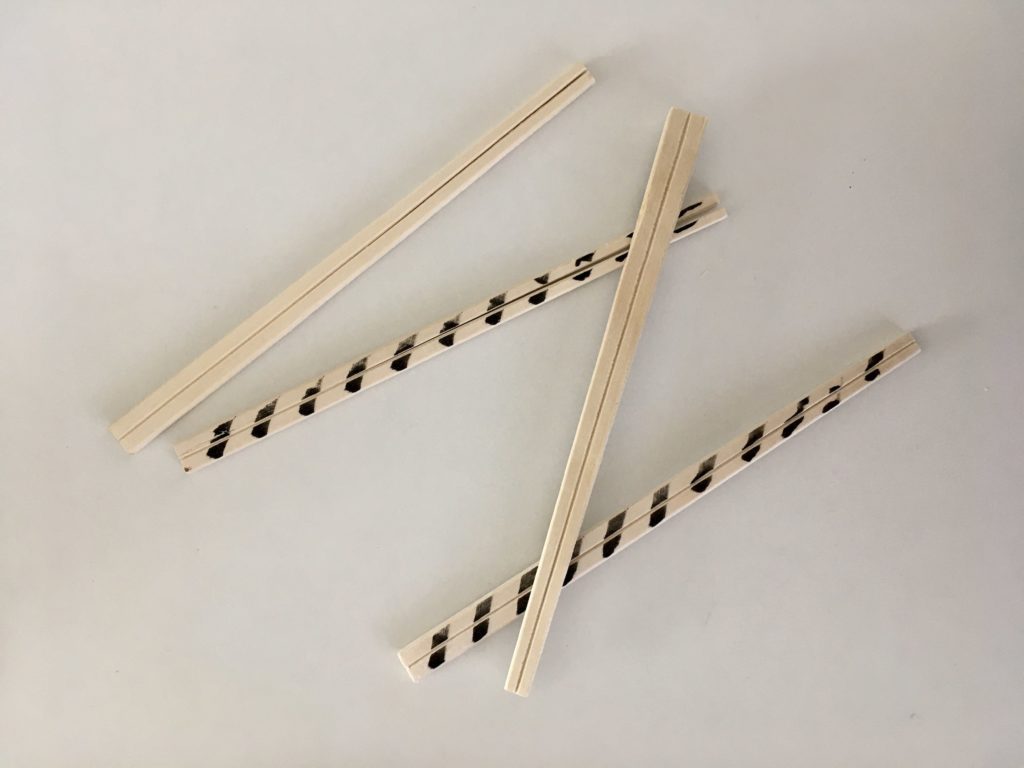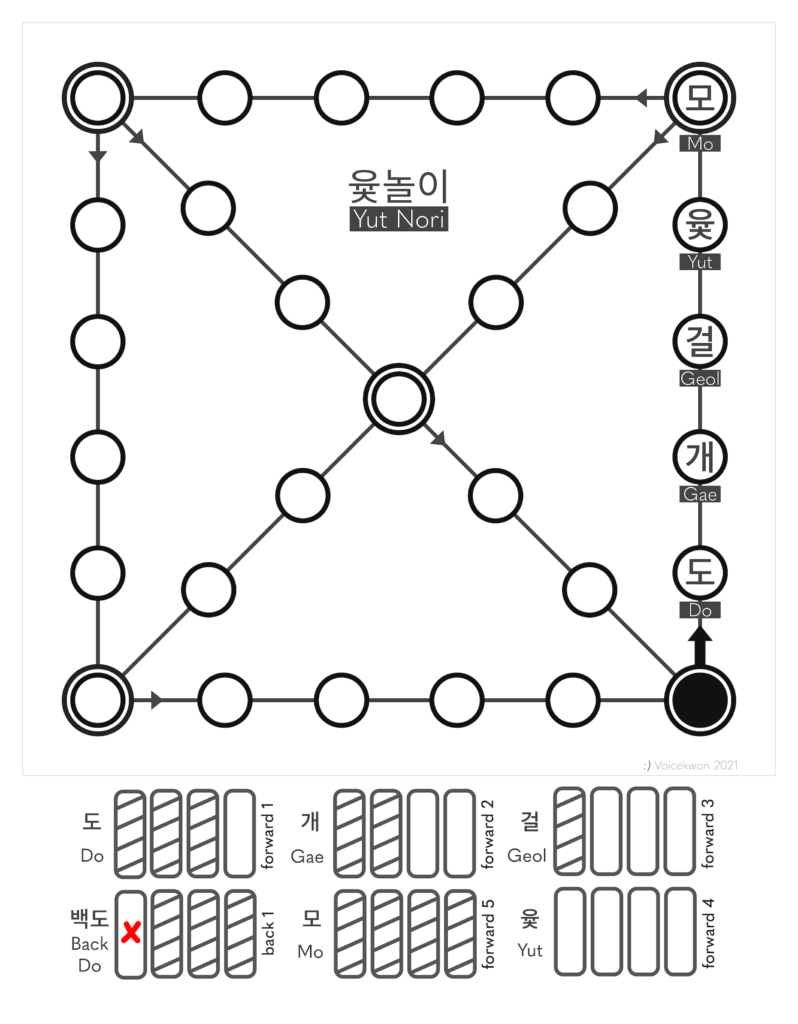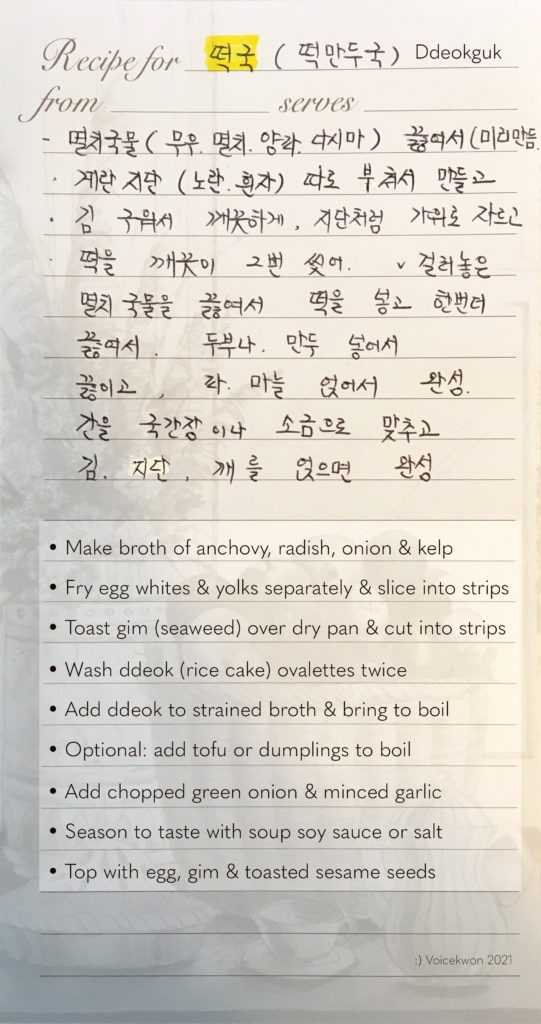12 Feb How to Play Yut Nori
Happy lunar new year! To accompany my Lunar New Year Special, below are instructions on how to play Yut Nori as well as a ddeokguk recipe.
How to Play Yut Nori 윷놀이
To play, you need a Yut Nori board, a set of four Yut sticks and pieces to move around the board. You likely have all of the items you need already at home. The point of the game is to get all of your pieces around the board and back home first. We usually wager money with the winning team taking all.
말판 Board: We typically draw the board with a Sharpie on the back of a large sheet of glossy paper from the previous year’s calendar. You can also print the one I’ve made available for download above for a smaller, letter-size board.
말 Pieces: You can use pennies for one team and nickels for another or any other distinct pieces that’ll allow you to easily distinguish one team from another. There’s no hard and fast rule about how many teams can play or how many pieces per team but generally, we play with two teams, four pieces each.
윷 Sticks: You can probably find Yut sticks at a Korean home goods store. Or you can make them at home. Take four pairs of disposable chopsticks (don’t separate the pairs) and mark each to indicate a top side. On one pair of them, put an X on the back to indicate Back Do. I’d recommend taping each pair to make sure they stay together while being thrown around. If you’re playing on a hard floor, you may want to unfurl a mat for the Yut to land on.

Do: 1 stick flipped over to the back | Go forward 1
Gae: 2 sticks flipped over | Go forward 2
Geol: 3 sticks flipped over | Go forward 3
Yut: 4 sticks flipped over | Go forward 4
Mo: No sticks flipped over/all Yut facing upward | Go forward 5
Back Do: 1 stick—the one marked with an X—flipped over | Go back 1

The filled-in black circle on the pictured board is the starting and ending point. Move according to what you roll with the Yut sticks. If you settle on either of the top double-circled corners, you have the option of following either the straight path or the diagonal.
You can double or stack as many of your own pieces as you’d like. For example, if you get Geol and you already had a piece three spots ahead, you could choose to move the piece already on the board ahead three or add a new piece, stacking on top of the existing piece on the third spot. This can be risky because if you get caught by the other team, you lose two or more pieces at once instead of just one. But it could also help you get home more quickly.
Like in many other board games, teams alternate turns. But if you catch the other team’s piece (e.g., you get Gae and the other team’s piece is two spots ahead of you), you get to roll again and take another turn. The piece(s) that are caught are thrown off the board and have to start over.
It’s a simple game. I think it has to be given that we only play it once a year. I might have have forgotten to mention something but as long the people involved agree upon the rules, it doesn’t matter too much what the exact rules are. It might be best to play a practice round to work out any discrepancies that may arise.
For a brief song tutorial, watch around 3:50 of my Lunar New Year Special.
떡국 Ddeokguk Recipe
Here’s my mom’s recipe for ddeokguk—without beef as that’s how I like it. 😋 My mom doesn’t do measurements; when I ask how much of something to put in, the answer is enough, 적당히. For an idea of how much she puts in, watch the video tutorial starting around 9:40 in the Lunar New Year Special. I think she was cooking for two people and prepared an abundance of gim since we could use it elsewhere too. In fact, she usually has strips of gim ready to go—as she does with the chopped green onion and minced garlic—but prepared it fresh since I was filming.
And for the soy sauce (the kind marked best for soup), she revealed afterward that she actually put in some kind of fish sauce instead because the soup soy sauce was far back in the cupboards. So I guess just use what you have if you can’t procure something.

새해 복 많이 받으세요~ Saehae bok mani badeuseyo.


No Comments